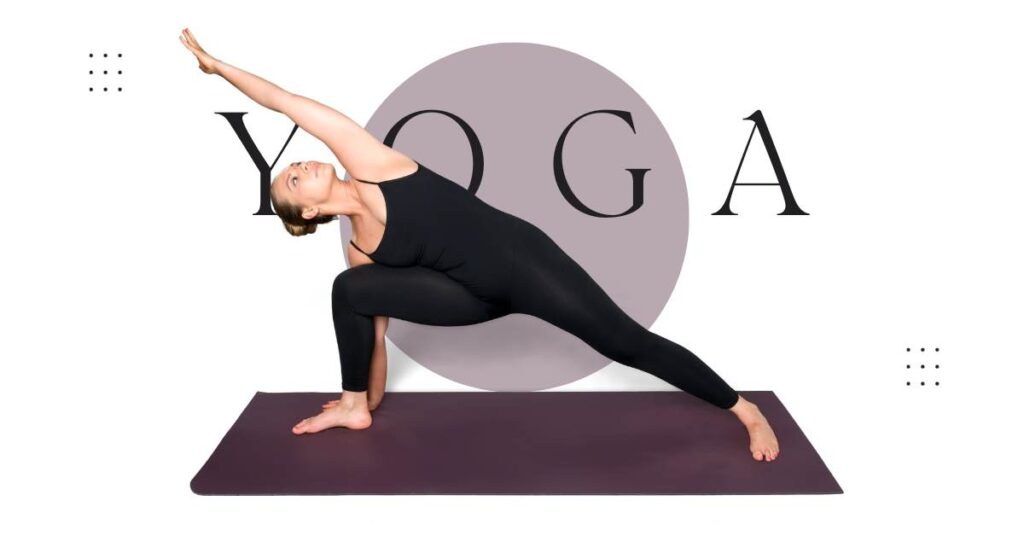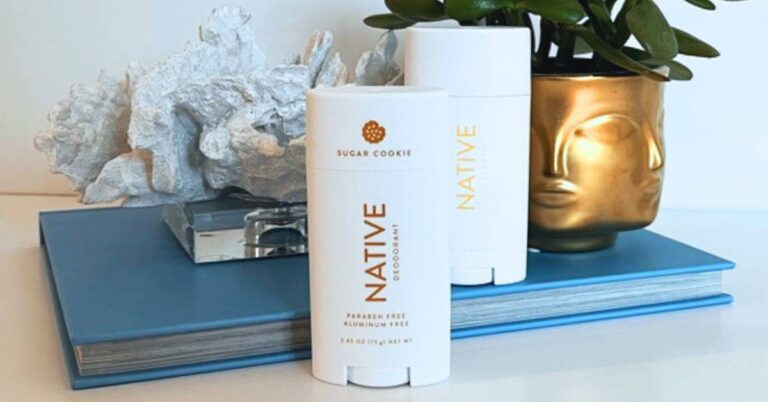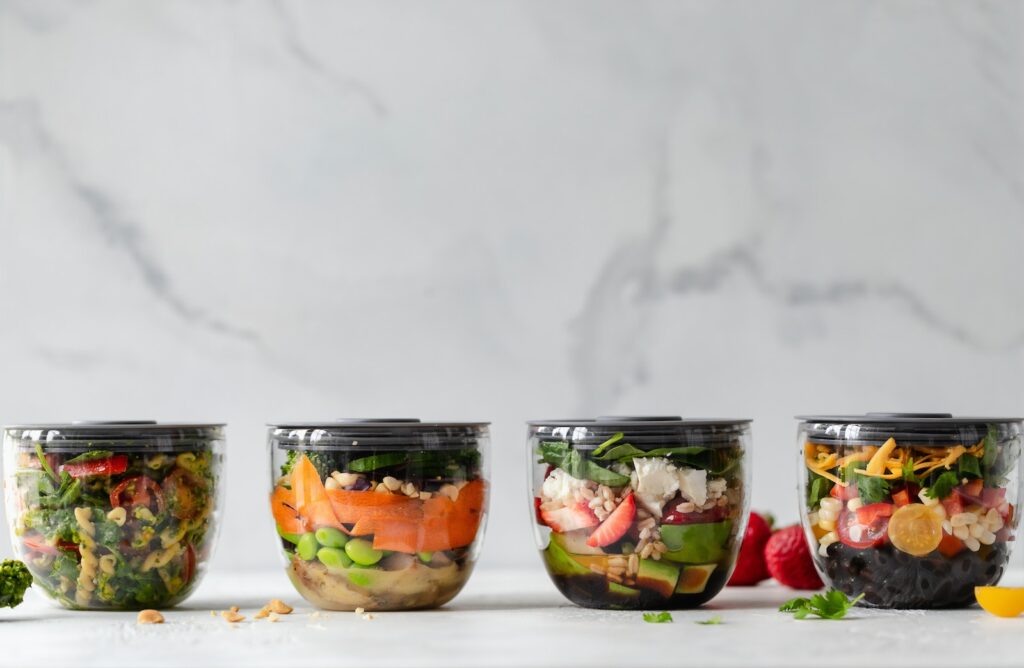There’s nothing more frustrating than sliding around on your yoga mat just when you’re trying to hold that perfect pose. Here, you’ll discover the top non-slip yoga mats specifically designed for those with sweaty hands and feet. Dive in to understand the challenge of sweaty hands and feet, explore the features of non-slip yoga mats, and get recommendations on the best ones on the market. I have also included our yoga mat length calculator to help you find the right yoga mat size dimensions for your height.
This post may contain some affiliate links. If you happen to purchase through them, we might earn a small commission. Learn more about it here.
My Background In Yoga
For over 15 years, yoga has been my sanctuary. In addition to thousands of hours of practice, I have over 200 hours of intensive yoga teacher training in Ashtanga and Vinyasa yoga. I have practiced everything from gentle, long-holding yin yoga to intense Bikram yoga in a 105-degree room and everything in between. And I have used a lot of yoga mats!
Click here if you would rather skip the details and get right to my suggested mats for sweaty hands and feet.
Understanding the Issue
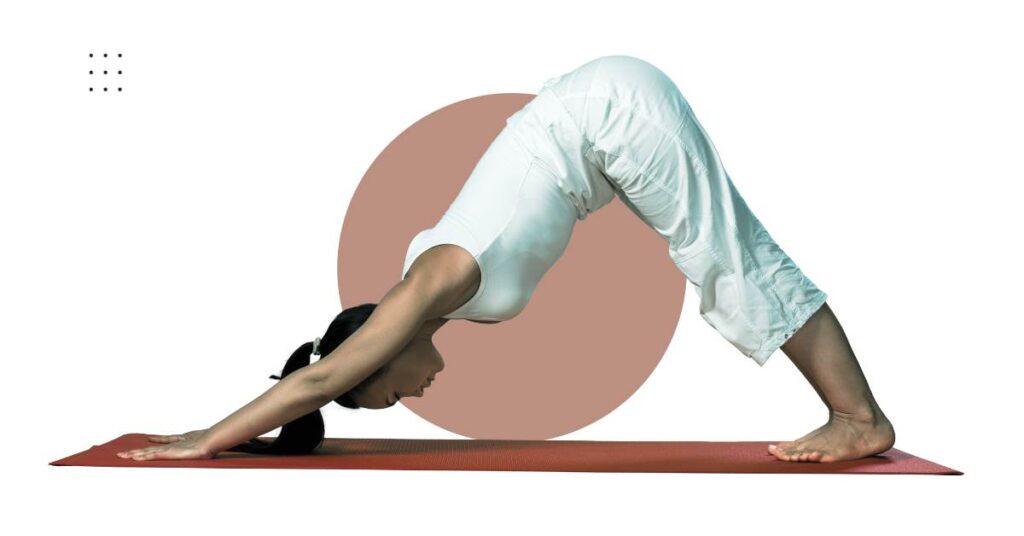

Sweaty hands and feet during yoga aren’t merely a minor inconvenience; they pose a real challenge for many practitioners. You’ve probably experienced it: Ten minutes into your yoga practice, your hands start to slip, and suddenly, that downward-facing dog isn’t as stable as you’d like.
The Science
But why does this happen? Our hands and feet contain more sweat glands than other body parts. As you dive deeper into your practice and your body temperature rises, these sweat glands get to work, releasing moisture to help cool your body down. While this is a natural and necessary function, it becomes problematic on a yoga mat.
The Effects
This moisture creates a barrier between your skin and the mat, reducing friction and increasing the chances of slipping. If you’ve ever tried holding a plank or executing a complex pose, you’ll know the importance of stability. Slipping can throw off your alignment, force your muscles to overcompensate, and, in worst-case scenarios, even lead to injuries.
Furthermore, frequent slips can dent your confidence. Instead of focusing on breathing, you might constantly adjust your grip, afraid of falling. This can drastically affect the meditative and calming aspects of yoga, turning a session that’s supposed to be relaxing into a stressful one.
The good news is that recognizing this issue is the first step toward solving it. With the right tools and understanding, you can turn your slippery challenge into a non-issue, allowing you to focus on what truly matters: your practice.
Features of Non-Slip Yoga Mats
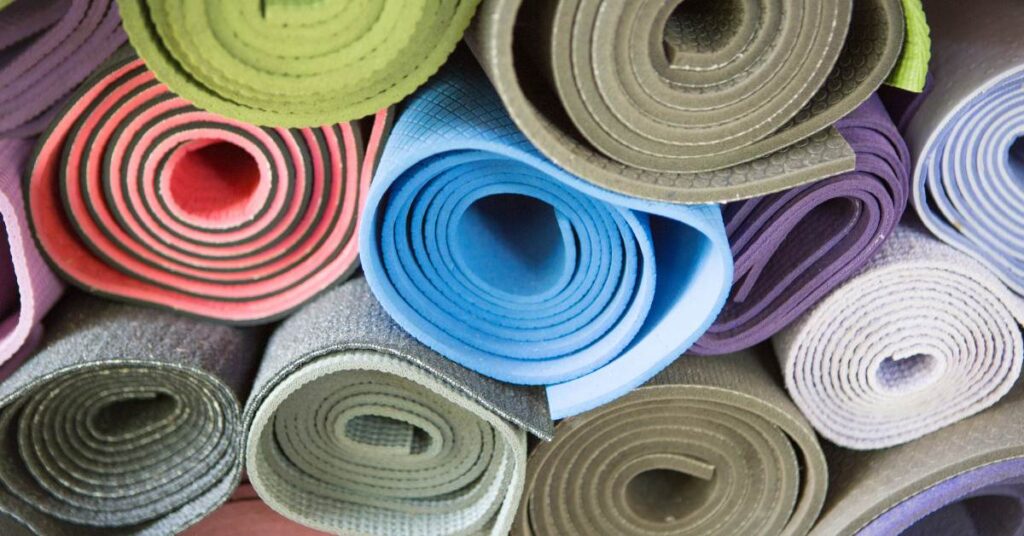

When you’re engrossed in your yoga practice, the foundation beneath you plays a pivotal role. A non-slip sticky yoga mat is a thoughtfully designed tool to enhance stability and support. Here are the features that contribute to making a yoga mat non-slip:
1. Top Layer Texture: The mat’s top layer ensures grip. Non-slip mats often have a textured or patterned surface, increasing traction and reducing the chances of slipping, even when moisture is present.
2. Material Composition: While traditional mats might be made of PVC or other smooth materials, non-slip, super grippy mats are often crafted from natural or synthetic rubber, thermoplastic elastomers. These materials inherently provide better friction.
3. Thickness: A thicker mat can provide better cushioning and is the best option for poses that put pressure on your joints. However, the right balance needs to be struck; too thick and it might lose its stability, while too thin might not offer enough cushion.
4. Density: Along with thickness, the density of a mat plays a role in its grip. A denser mat can offer more stability, ensuring it doesn’t bunch up or move around during your practice.
5. Absorbency: Some high-quality non-slip mats have absorbent properties, soaking up sweat instead of letting it pool on the surface. This ensures that even as you sweat, the mat’s surface remains conducive for practice.
6. Closed-cell vs. Open-cell Construction: Mats made with a closed-cell surface are more durable and hygienic due to their tight cellular structure, which prevents moisture and bacteria from penetrating. On the other hand, open-cell mats offer better grip and absorb sweat more effectively, but are less durable and they can also harbor odors and bacteria, requiring more frequent cleaning. Open-cell construction can be more prone to tears and nicks.
7. Edge Design: The edges of non-slip mats are often reinforced or have anti-tear features. This not only adds to the mat’s longevity but ensures that it lays flat on the ground, reducing any trip hazards.
8. Eco-friendliness: While not directly related to the grip, many non-slip yoga mats prioritize being eco-friendly. Natural materials not only benefit the environment but often provide a more organic feel and superior grip compared to their synthetic counterparts.
9. Maintenance Features: A good non-slip mat is easy to clean and maintain. Some can even be thrown into the washing machine, ensuring the grip remains optimal with frequent use.
Understanding these features helps in making an informed choice. The best non-slip yoga mat isn’t just about avoiding slips; it’s about enhancing your overall yoga experience by providing stability, comfort, and safety.
Types of Yoga Mats and Materials
Selecting the right mat combines personal preference and the style of yoga you practice. As the yoga world has evolved, so has the variety and innovation in mat designs and materials. Here’s a deeper look into the different types of yoga mats and the materials they’re made from:
1. Standard Yoga Mats:
- Material: Typically made from PVC (polyvinyl chloride).
- Features: They are often very durable and provide moderate cushioning and grip. Ideal for basic yoga practices.
- Drawbacks: PVC is a type of plastic and may not be biodegradable, raising environmental concerns for some.
2. Rubber Yoga Mats:
- Material: Natural rubber derived from rubber trees.
- Features: A natural rubber mat offers excellent grip for sweaty hands and feet and good cushioning, especially favored for more intense yoga sessions. They are also more eco-friendly than PVC mats.
- Drawbacks: Individuals with latex allergies might react to natural rubber mats.
3. Thermoplastic Elastomer (TPE) Mats:
- Material: A blend of plastic and rubber.
- Features: TPE mats are lightweight, UV resistant, and typically more eco-friendly than standard PVC mats. They provide a good balance of cushioning and grip.
- Drawbacks: They may wear out faster than natural rubber or PVC mats.
4. Cotton and Jute Yoga Mats:
- Material: Natural fibers.
- Features: These are eco-friendly options with a rougher texture, providing natural grip. They can be ideal for slower-paced yoga practices where cushioning isn’t a primary concern.
- Drawbacks: They may lack the cushioning of rubber or PVC mats and may not be ideal for practices like Vinyasa or Power Yoga.
5. Cork Yoga Mats:
- Material: Natural cork sourced from cork oak trees.
- Features: Cork mats are sustainable and provide a unique non-slip surface. They tend to become grippier when wet, making them suitable for those with sweaty palms and feet.
- Drawbacks: They may feel firmer than rubber or PVC mats, and the cork surface might crumble over time with heavy use.
6. Memory Foam Mats:
- Material: Soft foam that contours to the shape of the body.
- Features: These are more about comfort during yoga practice. They are plush and soft, ideal for restorative yoga or meditation.
- Drawbacks: They lack the grip required for more active yoga styles.
7. Travel Yoga Mats:
- Material: Various, but they are designed to be foldable or roll up compactly.
- Features: These are thinner and lighter than standard mats, making them perfect for on-the-go yogis.
- Drawbacks: Due to their thin design, they might offer less cushioning or durability than standard mats.
8. Hybrid Mats:
- Material: A combination of materials like rubber and jute or PVC and TPE.
- Features: They aim to provide the best of both worlds, like the grip of rubber combined with the texture of jute.
- Drawbacks: Their performance might vary depending on the blend of materials.
When choosing a yoga mat, consider not only the type and material but also factors like your yoga style, the intensity of practice, personal comfort preferences, and eco-consciousness. Each material and design offers its benefits, and understanding them can help tailor your choice to your unique yoga journey.
What Size Yoga Mat Should I Choose?
The right yoga mat size comes down to height, personal preference, and habits. Do you practice at home with plenty of space or in a small studio? Do you have far to walk? Longer mats weigh more.
Generally, it’s nice to have a mat that’s a few inches taller than you, but if you’re tall and don’t mind your feet hanging over a few inches in savasana, a standard size is fine.
For a general recommendation, use our yoga mat size calculator below.
Yoga Mat Size Calculator
Enter your height in inches:
List of the Best Yoga Mats for Sweaty Hands and Feet:
1. Manduka Pro Yoga Mat
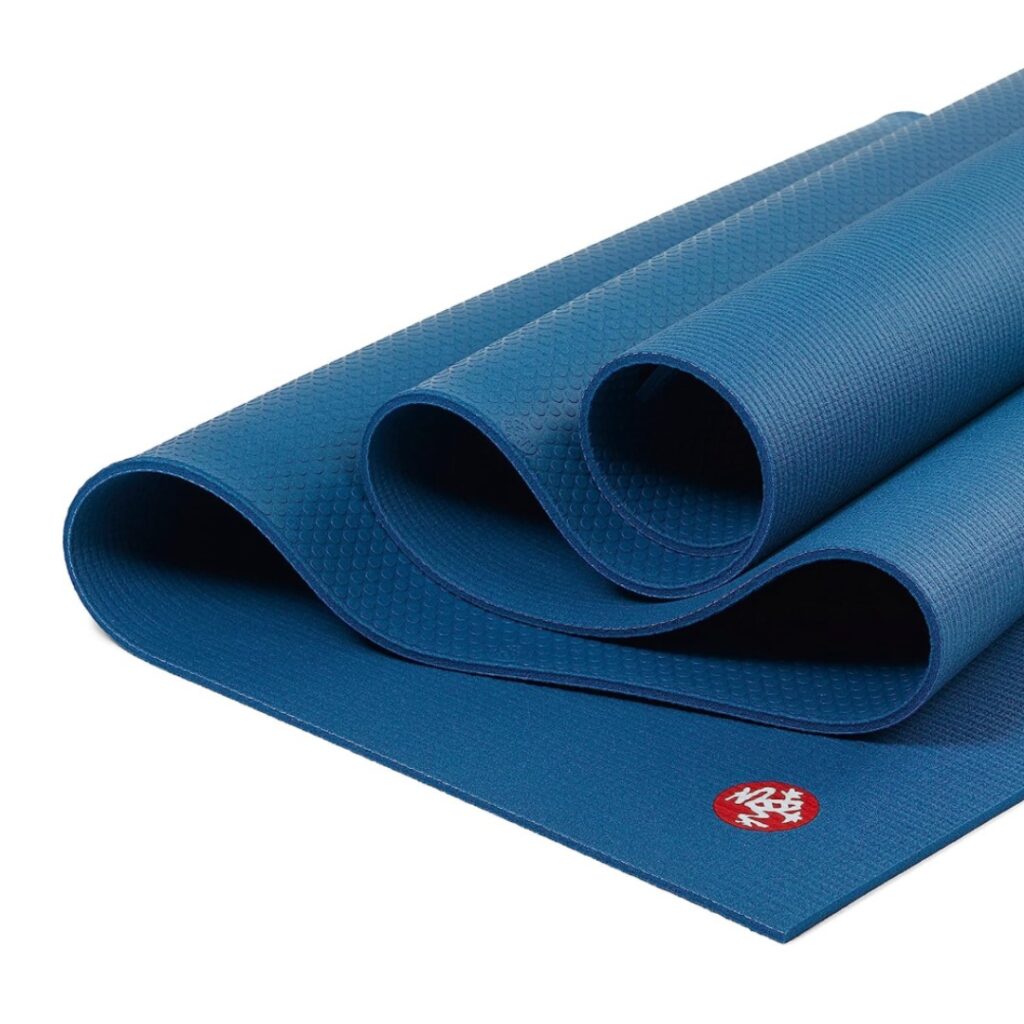

The Manduka Pro mat is widely recognized as one of the best yoga mats on the market, and it's the one I reach for the most from my collection.
Its 6 mm thickness with ultra-dense cushioning provides unparalleled support, making it ideal for yogis seeking a firm, stable base without sacrificing comfort.
Yoga mat dimensions: Standard size 71" length x 26" wide (7.5 lbs) or an extra long 85" length x 26" wide (9.5 lbs).
The mat's innovative no-slip dot pattern ensures it stays put during intense sessions, while the closed-cell PVC construction not only seals out moisture and bacteria but also makes cleaning a breeze.
Responsibly made in an emissions-free facility and OEKO-TEX® certified, this 100% latex-free and vegan-friendly mat caters to environmentally conscious practitioners and boasts a lifetime guarantee.
One important caveat: This mat needs a break-in period to become non-slip, and that could take some time. However, once it's broken in, it's a fantastic mat for all forms of yoga. According to Manduka, "The best way to break in your mat is to practice daily.......And if you’re looking to break your mat in fast, we recommend sprinkling coarse sea salt across your mat and then let it set for 24 hours. After that, spray with water, scrub the salt with a towel, and wipe clean. Let dry."
2. Manduka Prolite Yoga Mat
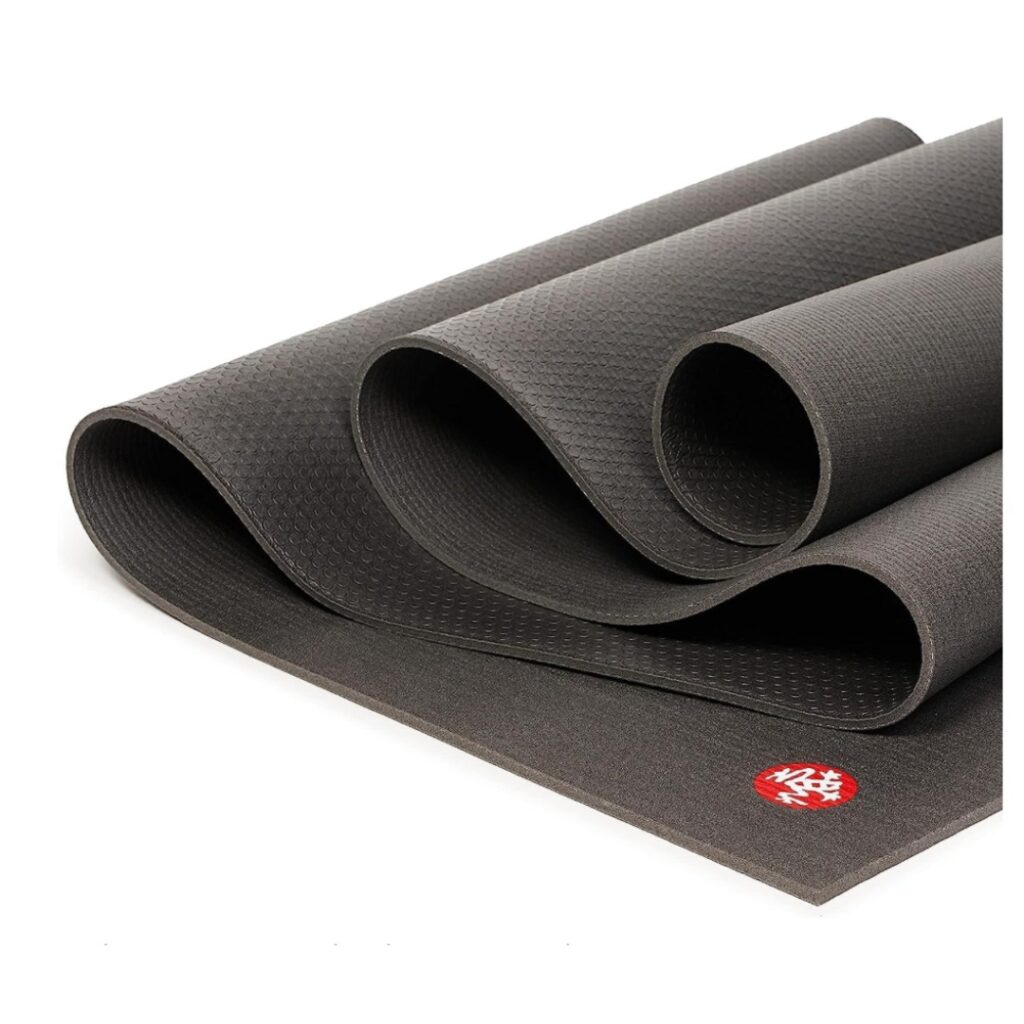

The Manduka Prolite yoga mat contains all the best features of the Pro in a lighter version.
Yoga mat dimensions: Standard 71" length x 24" (4 lbs.) or long 79" x 24" (4.5 lbs.)
3. Manduka eKO Yoga Mat
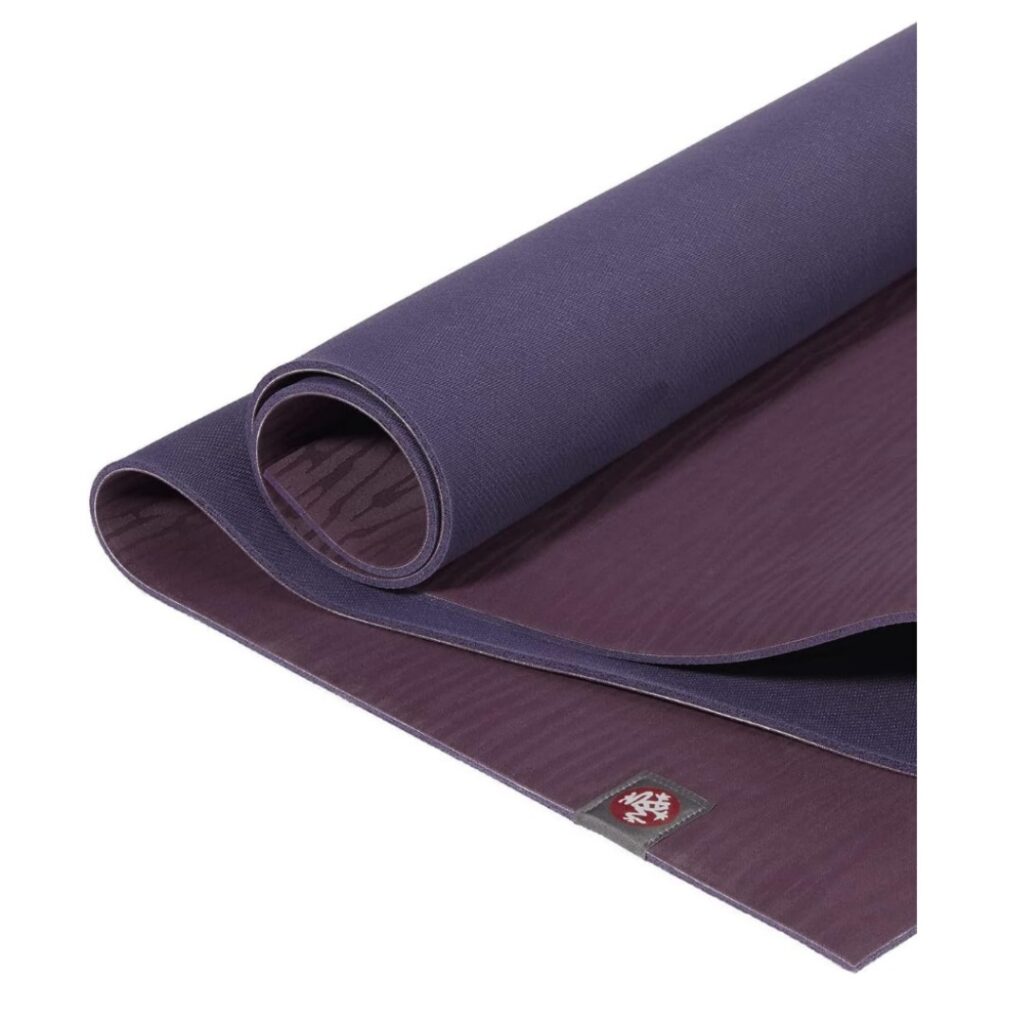

The 5mm eKO friendly mat is biodegradable with a naturally grippy surface with superior traction and a core layer with some springiness.
It's a pvc free yoga mat, sustainably harvested from 100% non-amazon rubber trees, boasts a zero waste manufacturing process, and is 100% latex free.
Yoga mat dimensions: This mat comes in standard size 71" length x 24" (7 lbs.) or long 79" x 24" (8 lbs.)
Note: This mat is already sticky. Manduka makes it clear NOT to use the salt method for the Pro line on the eKO mat.
4. Manduka GRP Adapt Mat
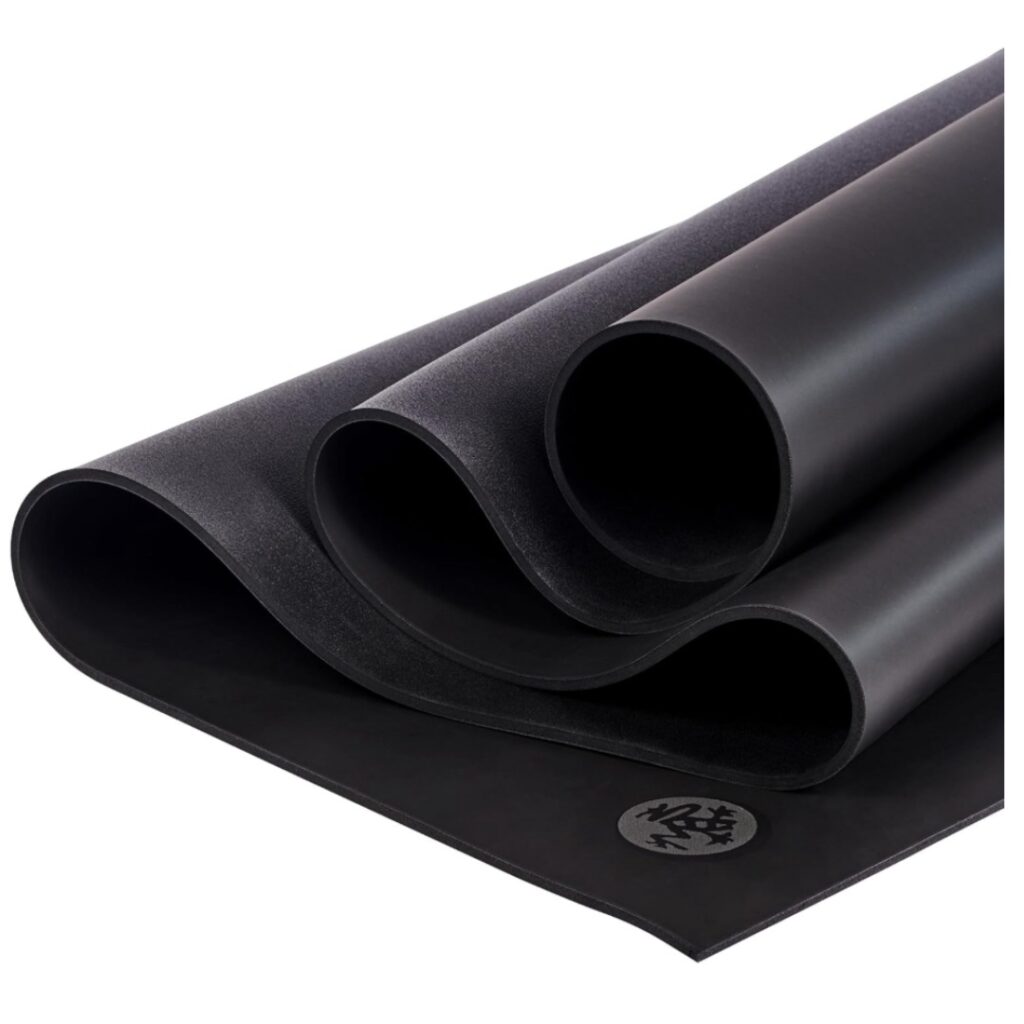

The 5mm GRP Adapt Mat is composed of an open-cell polyurethane foam top layer, a foam core middle layer, and a versa grip bottom layer.
Manduka refers to this mat as their "grippiest mat."
It's composed of 5% polyurethane /5% polyester (Scrim) and 90% natural rubber blend: latex/synthetic rubber.
Sustainably constructed in Spain.
Yoga mat dimensions: Standard size mat is 71" x 26" (5.5 lbs.), and the long extra-large size is 79" x 26" (7 lbs)
5. Jade Harmony Mat
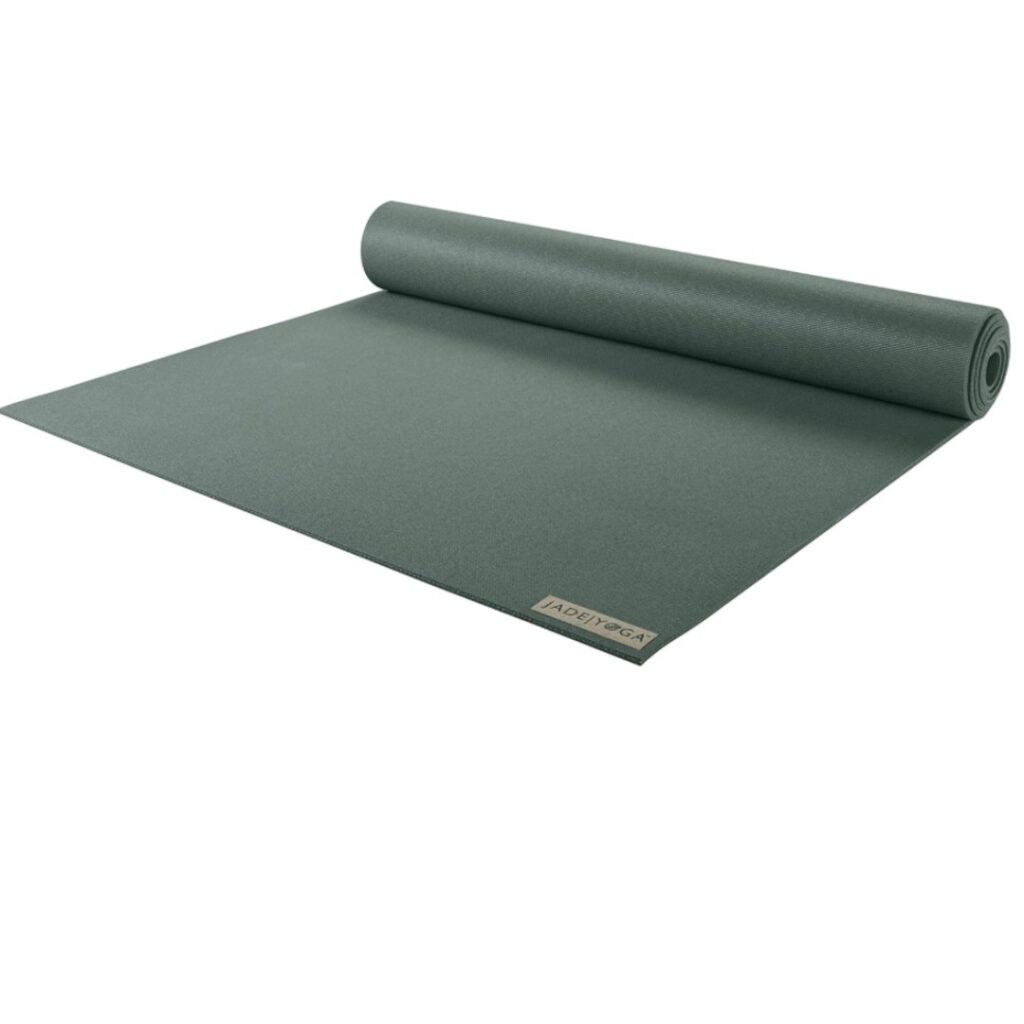

The 5mm jade yoga mat is made from natural tree rubber in an open-cell construction.
Jade produces PVC free yoga mats made in the USA. They are also free of other ozone-depleting substances, and are made by emissions-free manufacturing.
For every mat sold, Jade plants a tree.
Yoga mat dimensions: Standard size mat is 68" x 24" (5 lbs.)
6. Liforme Original Yoga Mat
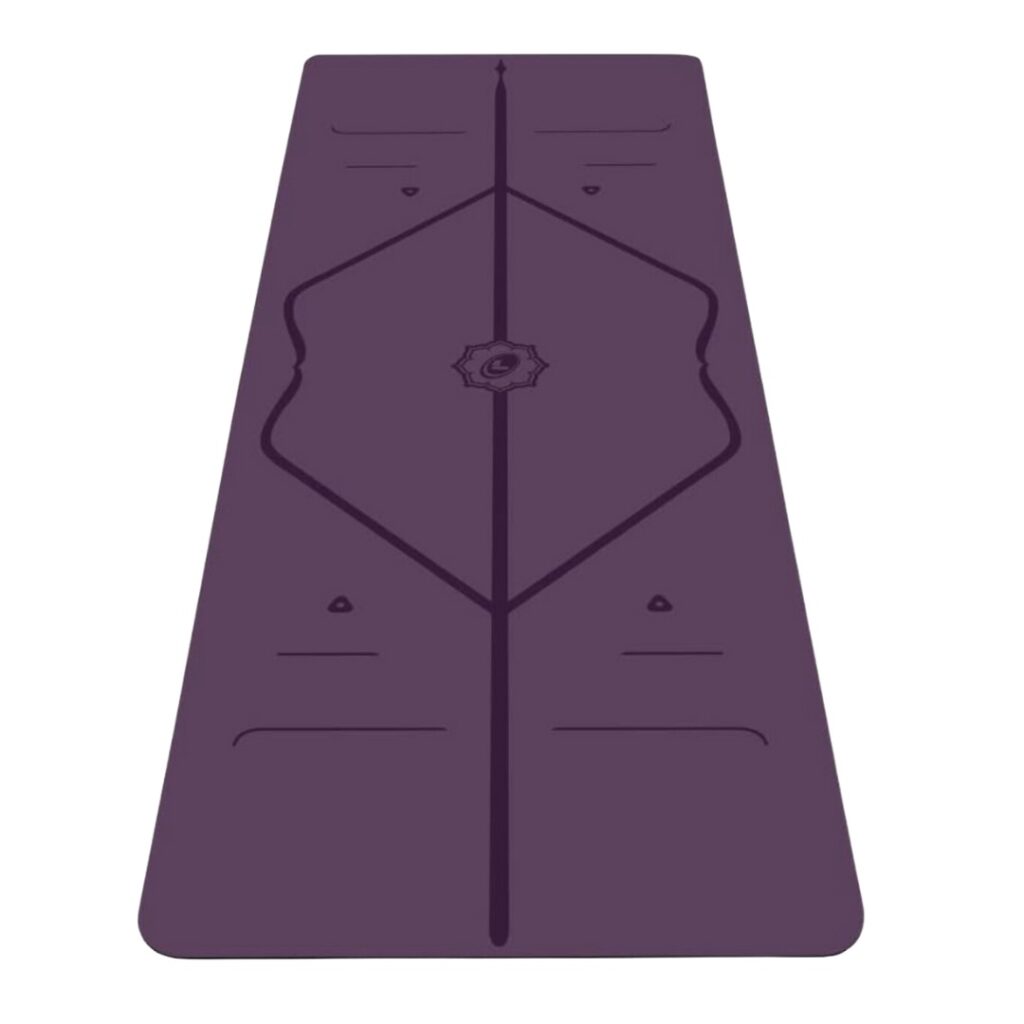

The Liforme 4.2mm mat has a natural rubber base layer and an eco-polyurethane Gripforme top layer. Note that the natural rubber contains latex.
PVC free yoga mat that's biodegradable in 1-5 years in normal landfill conditions.
The Liforme mat has an open cell structure on the top surface, meaning moisture is absorbed quickly and can evaporate easily.
The mat has printed alignment markers to guide poses.
Yoga mat dimensions: 73" x 27" (5.5 lbs.)
7. B Mat


The 2mm lightweight thin B mat is made from 100% rubber to provide optimal grip. It's one of the best mats for sweaty hands and feet for travel.
This pvc free yoga mat features an exceptionally grippy texture and an anti-slip surface.
B Mat's have a high texture open cell structure.
Dimensions: Yoga mat size: 71"L x 24"W (3 lbs.)
This sticky mat initially has a strong rubber odor, but it does fade.
Additional Solutions and Tools Beyond the Mat for Sweaty Hands and Feet
Beyond investing in a non-slip yoga mat, there are various supplementary solutions and tools available that can significantly improve your yoga experience, if you're grappling with excessive sweat. Here's an expanded look at these additional aids:
1. Yoga Towels:
- Overview: A microfiber towel, like this one by Gaim, specially designed to fit the dimensions of a yoga mat.
- Benefits: Made with high-absorbent microfibers, they soak up sweat efficiently, preventing puddles and ensuring a dry surface for your practice. They can be laid over any mat and are particularly beneficial for a hot yoga session.
- Usage Tip: Wet the corners of your yoga towel slightly before your session. This helps it grip the mat better.
2. Yoga Gloves and Socks:
- Overview: These are "shoes and gloves" for your yoga practice. Yoga Paws has a set that includes both the gloves and shoes.
- Benefits: Made with grippy material on the underside, they provide an additional layer of traction for your hands and feet—ideal for those exceptionally sweaty days or if you're practicing without a mat.
- Usage Tip: Ensure they fit snugly. Loose gloves or socks can become counterproductive, causing more slips.
3. Yoga Rosin:
- Overview: Similar to what gymnasts or ballerinas use, yoga rosin is a natural resin that improves grip.
- Benefits: By applying it to your hands and feet or even directly to the mat, you can enhance the tackiness and reduce slippage due to sweat.
- Usage Tip: Use sparingly. A little goes a long way.
4. Mat Washes and Sprays:
- Overview: Specialized cleaning solutions for yoga mats.
- Benefits: Regularly cleaning your mat not only maintains hygiene but can also enhance its grip. Dirt and oil buildup can make mats slippery over time.
- Usage Tip: Opt for natural or organic mat sprays. They're gentle on your mat and are better for the environment.
5. Absorbent Headbands:
- Overview: Bands worn around the forehead to catch sweat.
- Benefits: By keeping sweat from dripping down your face and onto the mat, headbands can indirectly help reduce slipperiness.
- Usage Tip: Choose a headband with a broad band for maximum absorption and comfort.
6. Portable Fans:
- Overview: At home, small fans, like the ones from Vornado, can be placed next to your mat.
- Benefits: By promoting air circulation, these fans can help evaporate sweat faster, keeping you and your mat drier.
- Usage Tip: Ensure the fan is placed at a safe distance where it doesn't interfere with your movements.
7. Antiperspirant for Hands and Feet:
- Overview: Products designed to reduce sweaty feet and hands.
- Benefits: Using a specialized antiperspirant can reduce moisture and give you more confidence in holding poses.
- Usage Tip: Test any new product on a small skin patch first to ensure you don't have any allergic reactions.
Remember, while these tools and solutions can be beneficial, the most crucial aspects are comfort and safety. Always choose products that align with your values, yoga style, and personal preferences. Combining a top-notch non-slip yoga mat with some of these additional tools can make your practice more focused, enjoyable, and slip-free!
Eco-Friendly and Ethical Considerations When Choosing a Yoga Mat for Sweaty Hands and Feet
In today's environment-conscious world, the products we choose have implications beyond their immediate function. This applies to yoga mats as well. Here are some eco-friendly and ethical considerations to keep in mind:
1. Material Origins:
- Natural Rubber: Derived from rubber trees, it's a renewable resource. Mats made of natural rubber are generally biodegradable, but the rubber must be sustainably harvested without causing harm to the environment.
- TPE (Thermoplastic Elastomer): While this is a synthetic material, it's more environmentally friendly than PVC. TPE mats are UV-resistant, lightweight, and can be recycled.
- Jute and Cotton: These are natural fibers and are typically biodegradable. They offer an earthy feel and are perfect for a truly organic yoga experience.
2. Production Process:
- Emissions: Consider companies that adopt low-emission production processes. This reduces the carbon footprint of the mat you purchase.
- Waste Management: Brands prioritizing recycling and minimizing waste in their production process are making a conscious effort to reduce environmental impact.
3. Toxic Chemicals:
- PVC (Polyvinyl Chloride): While PVC mats are durable and offer great grip, they are not biodegradable and can contain harmful chemicals. Look for mats that are phthalate-free if you're considering PVC.
- Non-Toxic Inks: If you're buying a mat with designs or alignment lines, ensure that the inks used are free from harmful chemicals.
4. Durability:
- It's eco-friendly to buy a durable mat that you can use for years rather than replace frequently. This reduces the environmental burden of production and disposal.
5. Packaging:
- Opt for brands that use minimal packaging or packaging made from recycled or easily recyclable materials. Avoiding unnecessary plastic wrappers and ties can make a big difference.
6. Ethical Labor Practices:
- Research the brand. Ensure that they employ fair labor practices and provide safe working conditions for their employees. Your mat should be a product of love and care, not exploitation.
7. End-of-Life Plan:
- Recyclability: Can the mat be recycled at the end of its life? Brands that offer recycling programs get extra eco-points.
- Biodegradability: If the mat isn't recyclable, can it biodegrade without harming the environment?
8. Community Initiatives:
- Many yoga brands are taking a step further by engaging in community and environmental initiatives. Whether it's planting a tree for every mat sold, supporting local communities, or funding clean water projects, these efforts show a brand's commitment to a better world.
9. Certifications:
- Look for certifications like OEKO-TEX, which ensures the mat is free of harmful substances. Eco-friendly certifications can be a good indicator of the brand's environmental commitment.
Remember that the perfect yoga practice is about more than poses; it's about harmony between your body, mind, and the environment. With our yoga mat size calculator and a list of the best non-slip yoga mats, pvc free mats, and additional tools, you're now well-equipped to tackle the challenges posed by sweaty hands and feet. So, invest in a non-slip yoga mat that resonates with your spirit, sustains your practice, and nurtures the world around you. Did I miss your favorite non-slip yoga mat? Let me know in the comments.
